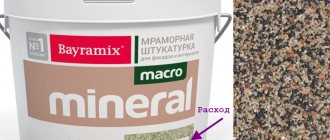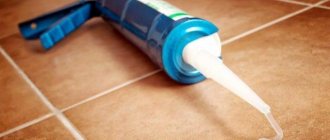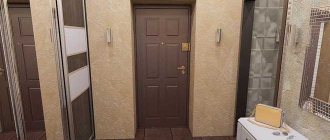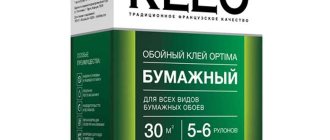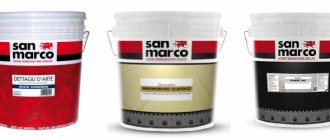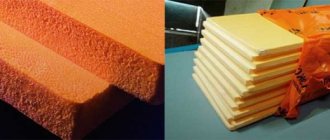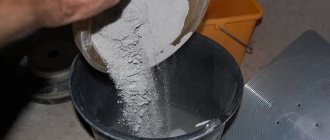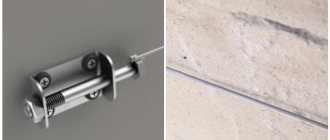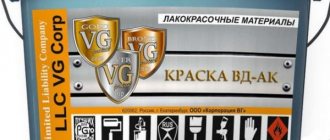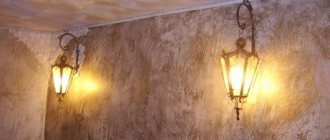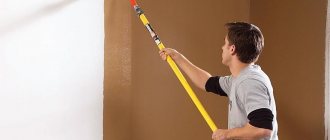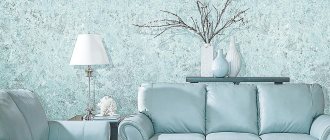For proper, and most importantly, less costly finishing work, the amount of necessary building materials should be pre-calculated. The consumption of plaster per 1 m2 has already been pre-determined by the manufacturer, and additionally the consumption rates were calculated and repeatedly tested back in the Soviet era and prescribed in SNiP. Simple calculations will help you quickly determine the required amount of material. More details about everything below.
What regulatory documents should be used when calculating
Standards for plastering walls were drawn up a long time ago and over the years have been repeatedly tested in practice by many builders. To determine the material consumption per 1 m2, only 2 regulatory documents are required, namely:
- SNiP 3.04.01-87. The standards have been drawn up specifically to determine the thickness and quality of both insulating and finishing coatings.
- Standard indicators of material consumption (NPRM) Collection 15.02 Plastering works. The collection is quite extensive and is recommended by the State Construction Committee of Russia as information material for the development of construction estimates. Standards and types of finishing materials for any surface are given.
Many of the data specified in SNiP 3.04.01-87 or in the more current version SP 71.13330.2017 are also in NPRM, but in an abbreviated version. No more regulatory documents are required to calculate consumption.
How to calculate how much façade mesh you will need and what material to choose
First of all, it is worth noting that some builders carefully lay mesh around the entire perimeter of the walls. But if you want to protect foam insulation from damage, then it makes sense to use it at a height of 1.5-2 meters. No one will reach higher anyway to damage the material. But, as they say, it’s up to you to decide. You can install a grid over the entire surface of the walls.
To calculate how much material is required, it is necessary to take into account the area of the surfaces being processed, the presence of irregularities on them and the method of applying the mesh (it can be laid end-to-end or overlapping).
It is worth paying attention to the consumption of specific materials. For example, when using polymer layers, each “square” will require 1.1 m2 of mesh, and if you work with fiberglass, its consumption will increase to 1.15-1.4 m2. But in any case, it is worth considering a margin of 5%, regardless of the type of product.
But, the meshes differ in cell size, thickness and material of manufacture. Therefore, the thickness of the future plaster layer should be determined immediately:
- If it is minimal and less than 20 mm, then in this case you can use the lightest and thinnest mesh or abandon it altogether.
- If the plaster is applied with a thickness of 20-30 mm, then in this case the best option would be a fiberglass product.
- When laying a plaster layer of 30 mm or more, a metal mesh must be used. Only this will be able to adequately prevent peeling of the cladding mortar.
- If the surface is characterized by large unevenness and serious differences, and the layer of plaster should be more than 50 mm, then it is worth abandoning plastering altogether in favor of other processing methods.
The fastening system will also depend on the selected material of the reinforcing mesh.
Recommended conditions before starting work
The consumption indicated in the regulatory documentation is relevant for certain environmental conditions both indoors and outdoors. Before starting finishing work, you should make sure that:
- The room temperature is at least 10 C0. Air humidity – no more than 60%.
- The room is ready for plastering. To do this, it is necessary to maintain the nominal temperature in it for 2 days before work and 12 days after.
Preparation and plastering of a brick wall
Only if the above conditions are met, the consumption of plaster per 1 m2 will not exceed that stated in the regulatory documentation.
Permissible thickness of plaster layer
To determine such an important parameter as the permissible thickness of the plastered layer, you should look at Table 10 of SNiPa 3.04.01-87.
Technical requirements of the regulatory document:
- The layer thickness when plastering walls in one layer, for all categories of finishing materials except gypsum, should be 20 mm. When using gypsum-based solutions – 15 mm.
- Thickness at spray stone, brick, concrete walls in several layers - 5 mm. Wooden - no more than 9 mm.
The first stage of plastering. Spraying a concrete wall - When applying cement mortar-based soil Lime mortar (addition of gypsum is allowed) – 7 mm.
The covering layer when plastering the surface should be no more than 2 mm, but only if it is not a decorative finish - then it is allowed to make it 7 mm.
Rotgypsum plastering technology
The technology for carrying out plastering work using a solution prepared from the dry Rotgypsum plaster mixture does not differ from the work performed with other gypsum-based materials. To create favorable conditions for work, it is necessary to provide a solid foundation. To do this, before applying the plaster, the surface to be treated must be cleaned, removing all spilled areas. After this, treat with a primer to remove dust and improve adhesion.
There are some practical techniques for plastering with Rotgypsum that allow you to achieve excellent results:
- Application of a plaster layer of increased thickness. The minimum thickness of the plaster layer created by Rotgypsum is 6 mm. Maximum thickness – up to 50 mm. If it is necessary to apply thicker layers, the material is applied in several stages. To apply the next layer, it is necessary to make notches on the previous layer to create better adhesion. This can be done using a comb - a notched spatula. Before applying the second layer, the surface should also be coated with a primer.
- Possibility of using plaster for gluing wallpaper without additional putty. Most often, the surface leveled with plaster is puttied with a thin layer of putty before applying decorative coatings. But when plastered with Rotgypsum, you can prepare the walls for wallpapering and painting without additional puttying. This allows you to significantly save on the purchase of materials - you do not need to purchase finishing putty, as well as on payment for work.
To do this, 20 minutes after trimming the irregularities remaining from the rule, moisten the surface generously with water and rub it in with a sponge grater. After this, finally smooth the resulting plaster milk using a metal trowel. The resulting surface is sufficiently even for gluing wallpaper without applying finishing putty.
- Painting over the plaster layer. If painting is chosen as a decorative coating, then the smoothed surface obtained in the manner described above is once again moistened with a large amount of water, and again smoothed with a metal spatula - trowel. This method allows you to obtain a perfectly smooth, glossy surface suitable for high-quality painting.
- Using plaster as a decorative coating. In addition to creating a basis for the subsequent application of decorative coatings, Rotgips plaster itself can also be successfully used as a decorative coating - creating a textured textured surface. To do this, before the surface hardens, it must be processed using special tools that create texture.
Special rollers or spatulas are suitable for this work. Decorative effects can also be created during application using a trowel and spatulas. In addition, on hardened but not completely dried gypsum plaster, you can make relief using the “ganch” technique - gypsum carvings. It is also suitable for applying three-dimensional designs using stencils.
Is it worth choosing Rotgyps?
The choice of material for plastering work depends on the preferences of the master. You should not rely on reviews from other users, because they are both positive and negative. Some craftsmen complain that it is necessary to eliminate cracks using Rotgypsum. After plastering with Rotgypsum, surface microcracks may actually occur. But they are not “living” - they do not penetrate into the depth of the layer and do not affect the strength of the plaster layer. For gluing tiles and wallpaper, the presence of microcracks does not affect the quality of finishing work.
Calculation of the required amount of mixture
You can determine the required amount of material for plastering using this method. It is necessary to calculate the average layer thickness for a wall with an area of 12.5 m2. First, the wall is hung in several places; the more you do, the more accurate the result will be. The results obtained for the curvature of the wall, for example, 1, 4, 2 cm, must be added up and divided by the number of sags, in our case three. We get the middle layer (1+4+2)/3=2.33 cm.
Now you need to calculate the average consumption per square meter and the total amount of material. If you chose “Volma-layer” for plastering, which has a consumption of 9 kg/m2, then we get 9 * 2.33 = 20.97 kg, this is the average consumption. We multiply it by a total area of 12.5 m2, 12.5 * 20.97 = 262.1 kg.
The mixture is sold in 30 kg bags, so we calculate how many bags you need to buy: 262/30 = 8.73. We round up the resulting result and get 9 bags. Now it’s easier to calculate how much you need to spend to plaster a wall. You can use an online calculator to calculate.
Let's sum it up
Calculation of materials is a responsible and important matter. Everything must be done correctly and taking into account various nuances. We learned what affects material consumption and how to correctly find out this figure. All you need to do is know the basic data and match it with the formula provided in this article. This way you can easily figure out how much material to buy for repair work.
In addition, if it is difficult for you to make any calculations, you do not understand how and what to do - this is not a problem. Use a special online calculator that will do all the calculations for you. All that is required is to enter the necessary data in the lines (average layer thickness, length and height of the wall, type of material) and the calculator will calculate the estimated consumption. It even tells you the number of bags you need to purchase. It can be found on our website. Now you know exactly how to calculate the consumption of decorative plaster.
Carrying out finishing work in an apartment often includes leveling the walls. In order to determine in advance the amount of material to be purchased, you need to know the consumption of plaster required for this operation. Such awareness will help not only to avoid downtime caused by a lack of dry mixture, but also to avoid unnecessary costs. Hired workers, wanting to earn extra money, often overestimate the amount of dry mixture consumed, and such a calculation will bring them to clean water.
Important! To calculate the consumption of plaster that will be required to obtain a flat surface, it is not enough to simply multiply the consumption of the dry mixture per 1 m2 indicated on the bag with the plaster mixture by the area of the wall being treated. In the calculation, parameters such as the curvature of the walls and the type of material used for plastering should be taken into account.
Mixture consumption per 1 m2 of surface
In the collection 15.02 NPRM you will find all the tables with consumption rates for various types of plaster (lime, cement, cement-lime mortar). For ease of understanding, its GOST is indicated next to the solution, and the consumption of mesh, plaster and dowels is also given. An inconvenience arises when calculating the amount of mixture per 1 m2, when the data is given in relation to 1 m3/100 m2 of area.
Consumption per 1 m2 with the condition that the material is applied in one layer (layer thickness - 1 cm):
- Plaster – 9 kg.
- Cement or cement-lime mortar – 17 kg.
- "Rotband". The main difference between the mixture and standard gypsum mortar is the presence of adhesion-improving additives. The consumption of the Rotband mixture per 1 m2 is 8.5 kg.
- "Bark beetle." "Bark beetle" is often used for finishing the facades of buildings and much less often - indoors. This type of plaster has several varieties, but on average its consumption is 3 kg per 1 m2.
- "Volma". Volma plaster is popular due to the variety of products - there are at least 22 types. One of the most common is “Volma-layer”, and its consumption ranges from 8 kg.
- Venetian plaster. It is more suitable as a filling option, since its layer should be very thin, so the consumption of the “Venetian” is as economical as possible: 200 g per 1 m2.
Consumption per square meter for some types of plasters - Vetonit. It is widely used due to its relatively low consumption. The composition of Vetonit mainly includes: cement (base), sand, limestone and microfiber. Consumption: 1.5 kg per 1 m2.
- "Teplon". Gypsum-based plaster is valued for its high environmental friendliness, affordability in terms of pricing policy and high-quality vapor permeability. Teplon consumption is 1.8 kg.
Important! If the surface is too deformed or there are cracks and potholes, you should add a certain amount of material to the already calculated one. Sometimes it is simply enough to round the estimate number up if it is not a whole number.
Gypsum plaster according to GOST
Nowadays, the most popular mixtures for plastering premises are made on the basis of such a universal building material as gypsum. But not all manufacturing companies, due to the constant savings in component materials, strictly follow the letter of GOST. The main regulatory document that precisely specifies the requirements for the production of gypsum mixture is GOST R 57957-2017.
The following are available in GOST:
- Notation.
- Types of gypsum plasters.
- Labeling and packaging.
- Thermal conductivity values of the material after it hardens.
Composition of gypsum plaster
But most often, buyers are not interested in the composition of the plaster, but in its proportions. To find out the components of a dry gypsum mixture, just look at GOST 31377-2008, which consistently describes all the requirements for this product:
- The dry mixture must not contain grains larger than 5 mm. GOST allows the presence of grains measuring 1.25 mm - no more than 1%, 0.2 cm - no more than 12% and 0.125 - no more than 15%.
- Gypsum, which is added to the dry mixture, must be made in accordance with GOST 125.
- After adding water to the dry mixture, the resulting solution should set during manual application in at least 45 minutes. When using any application technique - no less than 90 minutes.
- The water holding capacity should not be less than 95%.
Important! If this GOST is indicated on the box of the purchased mixture, but the quality of the plaster, its hardening time or other characteristics do not meet the requirements of the regulatory document, then each buyer has the right to receive monetary compensation.
Plaster Knauf Rotband
Knauf Rotband is very popular among craftsmen and finishers. Firstly, because of its versatility (suitable for concrete, brick, cement surfaces, as well as gypsum partitions). Secondly, because of its affordable price.
When purchasing Knauf-Rotband plaster, you should not pay attention to its color, since similar products can be white, gray or pink. Different colors and shades of the mixture are given by polymer additives, which are mixed with the main ingredients specifically to give good stickiness to the finished solution.
The consumption of Rotband is much less than cement-based solutions, since gypsum predominates in these products. 8.5 kg of mixture is enough to cover an area of 1 mm2. A layer 1 cm thick dries in no more than 1 hour, but to fully gain strength, the plaster should be allowed to sit for at least 7 days.
Gypsum solutions are capricious in some nuances, so Rotband has several minor drawbacks:
- A layer of Rotband plaster is inferior in strength to the same layer, but based on a cement component.
- It quickly enters into a process with metal parts (nails, screws, screws, self-tapping screws), which leads to their rust. Therefore, yellow stains may appear on the plastered surface over time.
- It is best not to apply Rotband in areas with high humidity.
Important! The building materials market is filled with fakes, which in appearance and cost are practically no different from the original. The main feature of Knauf Rotband unnatural plaster is the presence of sand in the packaging. Such a product should be returned to the seller immediately!
Knauf Rotband
“Rotband” is a popular, affordable and high-quality gypsum mixture, optimal for application by hand. The thickness of the layer should not exceed 5 cm. The amount required to treat 1 m2 with a layer of 1 cm is 8.5 kg.
Buy Knauf Rotband in the online store
Anton Tsugunov , I have been doing repairs and finishing since 2003.
I prefer to buy plaster in an online store - it is very simple, convenient and safe. You can buy plaster without leaving your home. Most often I order delivery directly to the site, so as not to waste time and not “damage” the car.
In the online store you can find the exact specifications and real customer reviews.
Moreover, when I pay for the tiles with my card , I receive cashback of up to 30% of the purchase amount!
It turns out to be a double benefit! I don’t risk my health, I don’t waste time on the road, I receive the paid tiles at the time I specified and also save up to 30%.
Plaster is packaged in 30, 10 and 5 kg:
- Gypsum plaster Knauf Rotband, 30 kg >>>
- Gypsum plaster Knauf Rotband, 10 kg >>>
- Gypsum plaster Knauf Rotband, 5 kg >>>
USEFUL INFORMATION: Leveling bathroom walls with plaster: step-by-step instructions
